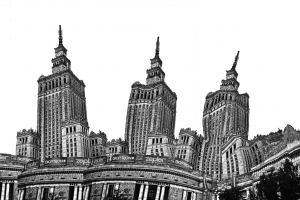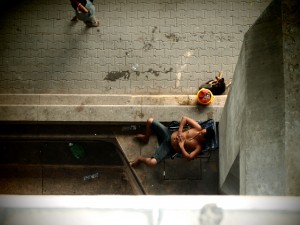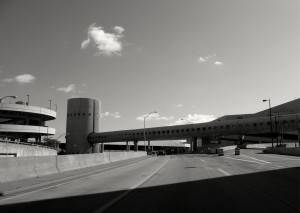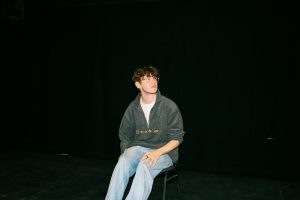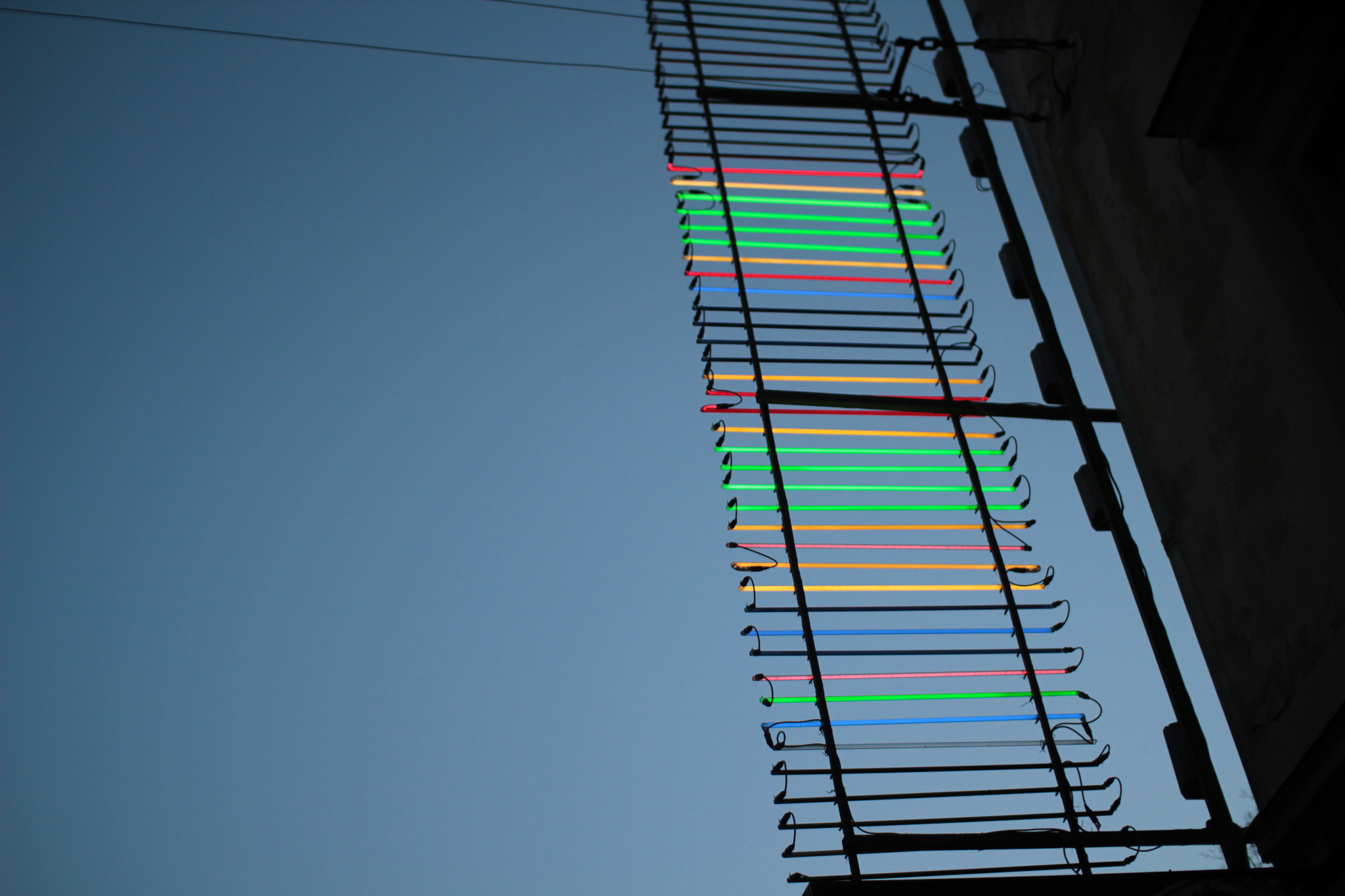
Lighting up the City: Neon in Warsaw
by Karolina Kalinowska | March 27, 2015
Neon signs are experiencing a resurrection in Poland’s capital city. Riding the wave of vintage revival, neons that survived the Cold War are being restored and new pieces are cropping up throughout the city. Juxtaposed against the backdrop of a disordered commercial urban landscape, their timeless designs hold a charm over Varsovians. Formerly socialist propaganda, they have now been reclaimed by the arts community as a distinctive element of the city’s heritage, underlining Warsaw’s transformation from its days under Soviet rule.
Neon’s heyday began in the late 1950s, thanks to the explosion of artistic creativity during the Thaw after Stalin’s death. The fever for illuminated typefaces served a number of purposes. On a practical level, they were promoted by the state in an effort to light Poland’s major cities. Contrary to the seedy associations with “Peep Show” or “Liquor” signs in the West, neons in Poland took on a propagandist role. They were meant to convey a sense of modernity and progress, a paradoxical illusion of Western glamour and glitz without the accompanying capitalism. Bizarrely, it worked: “We felt, even if only briefly, that we were part of the world, part of the rest of Europe,” reflects a Varsovian, in the 2014 documentary Neon. In reality, consumerism was impossible and shortages of almost every product resulted in heavy rationing and endless queuing. Nevertheless, the neon signs marking almost every shop, café, library and music hall gave the capital the feel of an Eastern Bloc Vegas.
When creating a neon, “[y]ou have to take light and make it appear like a drawing in the sky,” describes design historian David Crowley. “There’s this fantastic, witty, imaginative, creative act in producing great neon.” The best visual artists and architects were commissioned to execute the signs. They created their own inimitable typefaces and styles and neon became a new art form, blurring the divide between applied and fine art. The elaborate graphic elements and imaginative fonts gave the streets a dream-like glow at night. In an amusing or emotive way, neons could depict what was inside the building they adorned, like the volleyball player throwing her ball down the side of a multi-storey sports shop or a burglar climbing up the side of an insurance company building.
But the neons were all owned by the state and as a result many served as bizarre advertisements. No brands were promoted, just ideas – of paper, lamps or meat. They flaunted unattainable products, like Soviet watches or Bulgarian wine, or lavishly lit up shop names that only offered empty shelves. Rejecting the advertisements as pointless, the designer Piotr Perepłyś refused to design such inapt neon signs.
Economic and energy crises of the mid-70s followed by martial law were the beginning of the end for neon. It was easiest to pull the plug on the illuminations that consumed such huge amounts of electricity. They fell into disrepair and a depressing landscape of broken neon welcomed the dawn of capitalism. They began to be treated as “a communist deformity”, comments journalist Marek Nowakowski in Neon: “We were meant to start anew.”
Ilona Karwińska, British photographer and founder of the Neon Museum in Warsaw, remembers her first visit to Poland: “The urban landscape still showed evidence of its communist past… badly constructed buildings, milk bars, old kiosks, and of course decaying neon signage from this time period. The neon signs were the predominant and most interesting feature that remained from this historic Cold War era. Monolithic letters and symbols, spanning the entire length of buildings – reaching outwards and upwards, decaying metal, broken glass – but with spectacular letterforms making up unusual words and products long since gone.” Fewer than 60 of the thousands of original neons remain in Warsaw. Most of these are neglected and rusting. They are disappearing at an alarming rate, often along with the building they once illuminated. The director of Neon, Eric Bednarski, recalls, “While I was making the documentary, older people I wanted to speak to would ask why I was wasting my time on this, [saying] that neons are a piece of trash.”
In modern-day Warsaw, neon is now hip. It has become so iconic that you can buy tote bags and retro communist-style mugs with neon-shaped prints. Many institutions are restoring their old neons or designing new pieces. Young people, like artists Ilona Karwińska and Paulina Ołowska, who did not experience the first era of neon, are fighting to preserve the relics of a time they never knew. Ołowska rejuvenated the volleyball player, returning it to its original home as a “social sculpture”. Karwińska, the principal rescuer of the endangered neon, founded the Neon Museum from her personal collection amassed over nine years. “As we learned more about the historic and cultural importance of the Polish neonisation project and the connection between the great graphic designers of the day, many of whom were part of the famous Polish Poster movement, we had a growing sense of their worth,” explains Karwińska, “not just as historic symbols, but as an independent art form – or School of Neon.”
Stripped of their painful political connotations, neons are appreciated for their old-school charm and sleek, modern elegance. “There is a sort of on-going love affair with neon as a medium that I don’t think will ever fade,” Karwińska muses. But neon revival is not a nostalgic movement to glorify the oppression of the Socialist regime. Rather, it is a quest to regain the identity of a chaotic but increasingly homogenous city in a commercialised world. Neon restoration and creation makes a poignant statement about the ugliness of contemporary commercial advertising, the bane of Warsaw’s urban space, and the rapid tearing down of iconic buildings of the time to make room for skyscrapers and high grossing apartment complexes. As Crowley remarks, it harks back to “a time when advertising could produce high culture or cultural values”.
A new neon is quickly becoming the hallmark of Warsaw, created by contemporary graphic designer Mariusz Lewczyk – an enormous gentle giant of a 14-letter sign on one of the city’s main bridges that reads ‘MIŁO CIĘ WIDZIEĆ’ – good to see you.
